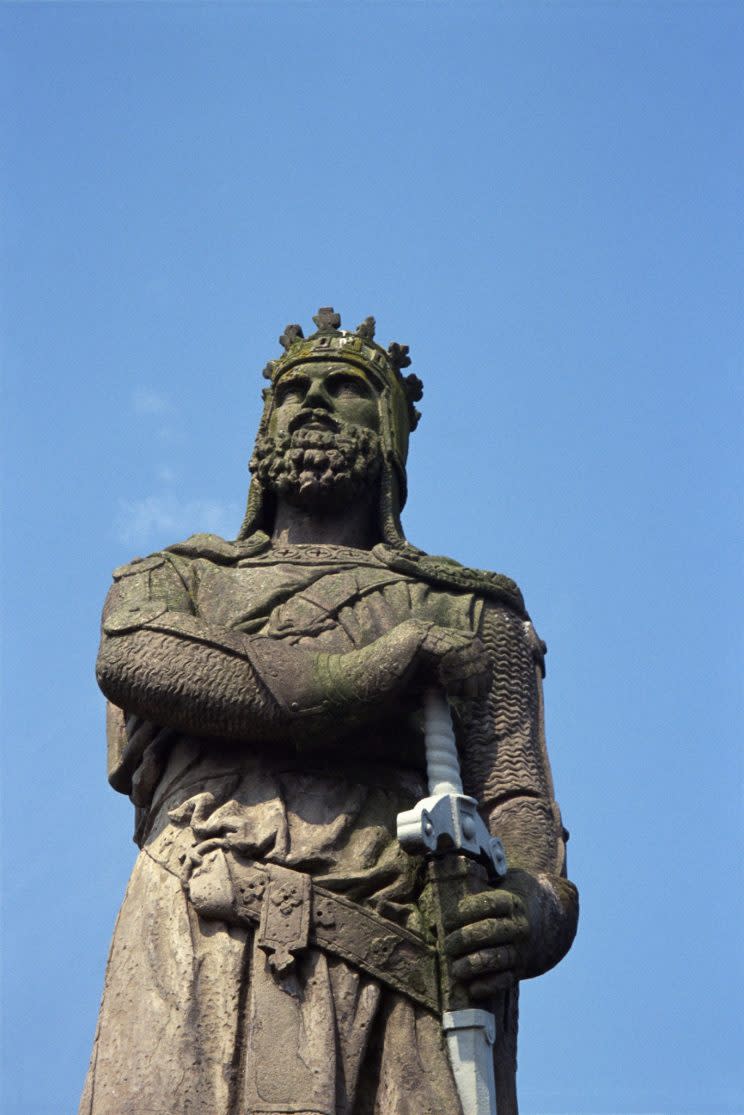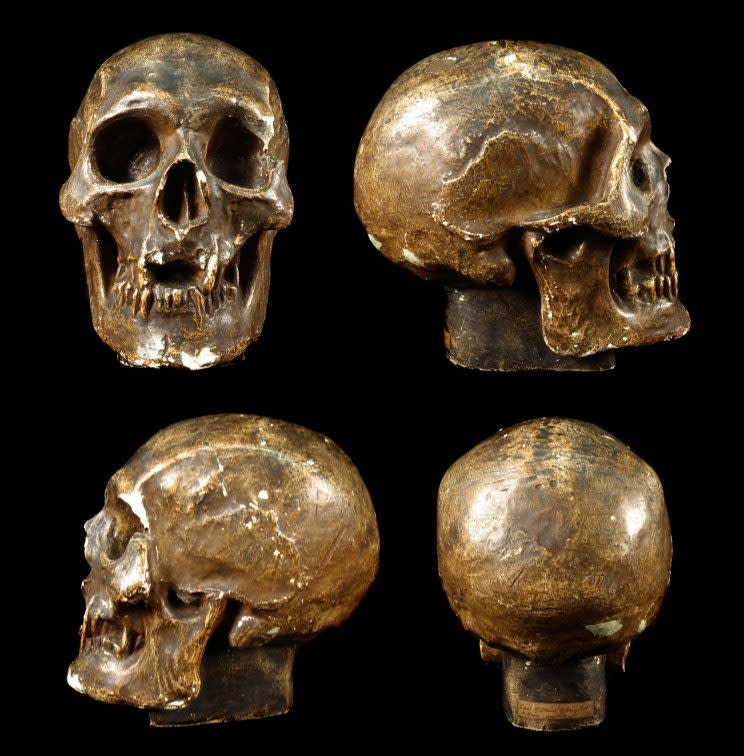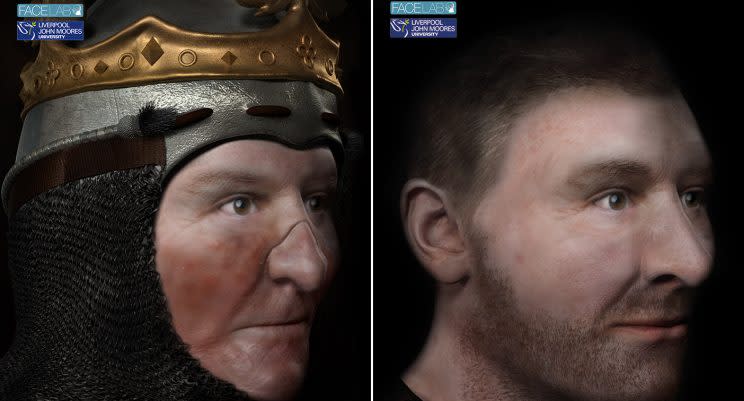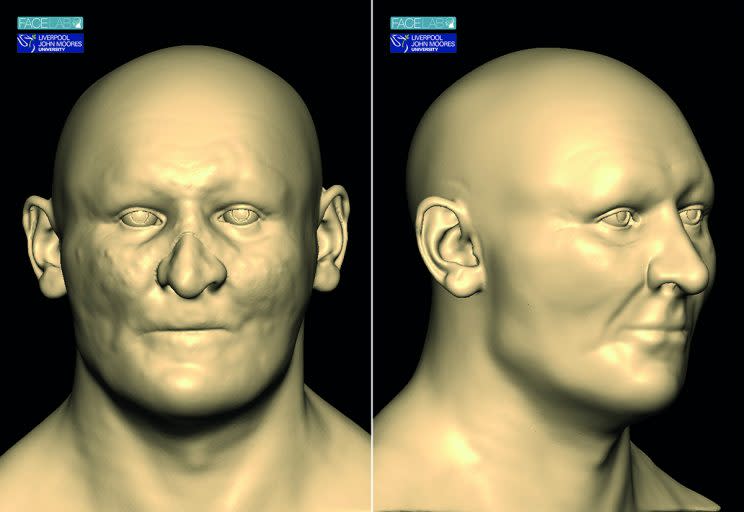Historians reveal exactly how Robert the Bruce would’ve looked, 700 years after Scots King's death
He has been depicted for centuries in paintings, sculptures and films without anybody actually knowing what he looked like.
But now, scientists have revealed the face of Robert the Bruce nearly 700 years after he ruled over Scotland – creating realistic virtual images of his head and even showing how leprosy would have affected his appearance.

Historians from the University of Glasgow and craniofacial experts from Liverpool John Moores University (LJMU) have unveiled the images.
Robert the Bruce, who reigned over Scotland between 1306 and his death in 1329 at the age of around 55, is famous for fighting the English at the Battle of Bannockburn in 1314.

In the first images of him, he is seen to have a large head dark brown hair and brown eyes.
Experts said he would have had a muscular neck and strong frame due to a first-class diet, preparing him for the brutality of medieval warfare. And some of the virtual images show how leprosy may have affected him, leaving his nose and cheeks disfigured.
MORE: Terrifying picture shows huge SHARK swimming just metres from oblivous swimmer
MORE: Britain’s ‘most festive street’ has raised £72,000 for charity with incredible light display
The quest to reveal Robert the Bruce’s face was launched by Dr Martin MacGregor, a historian at the University of Glasgow, who was inspired by the use of technology in the discovery of King Richard III of England’s skeleton in 2012.
He said: “Bruce was an interesting man and an exceptionally capable king. If we have new technology to tell us more about him, and get closer to him, it seems sensible to use it.”

He added: “I would like us to take every opportunity available to make that happen and to try to learn something new about this hero.”
The team used a cast of Bruce’s skull excavated from Dunfermline Abbey in Fife between 1818 and 1819.

Professor Caroline Wilkinson, world-renowned craniofacial identification expert and director of LJMU’s face lab, carried out the reconstruction.
She said: “Using the skull cast, we could accurately establish the muscle formation from the positions of the skull bones to determine the shape and structure of the face.

She added: “But what the reconstruction cannot show is the colour of his eyes, his skin tone and the colour of his hair.
“This is the most realistic appearance of Robert the Bruce to date, based on all the skeletal and historical material available,” she added.




